This is a continuation of a report on new ways to look at depth of field. The series starts here:
Yesterday, we looked at object field MTF50 behavior with the lens focused at infinity, and found that with our simulated top drawer 55mm lens, a simulated Sony a7RII, the middle-distance curves were not flat, as object-field theory says they should be. The gross reason is not a mystery: lens aberrations, diffraction, and fill-factor considerations all conspire to provide other sources of blur than just geometrical optics.
But which one is the most important?
I ran a series of curves at f/4 at pixel pitches varying from 3 micrometers (um) to 8.5 um, with each pitch being 1.414 times the previous one.
First in the image plane:
And then in the object field:
The blue line is for the 3um pitch. You can see that decreasing the pitch makes a big difference.
Zooming in:
OK, now let’s back out the lens aberrations:
That helps. The 3 um line is now pretty flat until 40 or 50 meters.
Now I’m going to take out diffusion. You can’t do this in real life, but you can with a sim.
Diffraction doesn’t make all that big a difference; that’s because we’re at f/4, and because we took it out last. Diffraction is a slightly larger effect than the lens aberration measure that we’re using.
{The material below was added later.]
I’ve been asked to show what the above vurves would look like at f/8, Here goes, first in the image plane:
And now in the object plane with sources of blur successively removed:
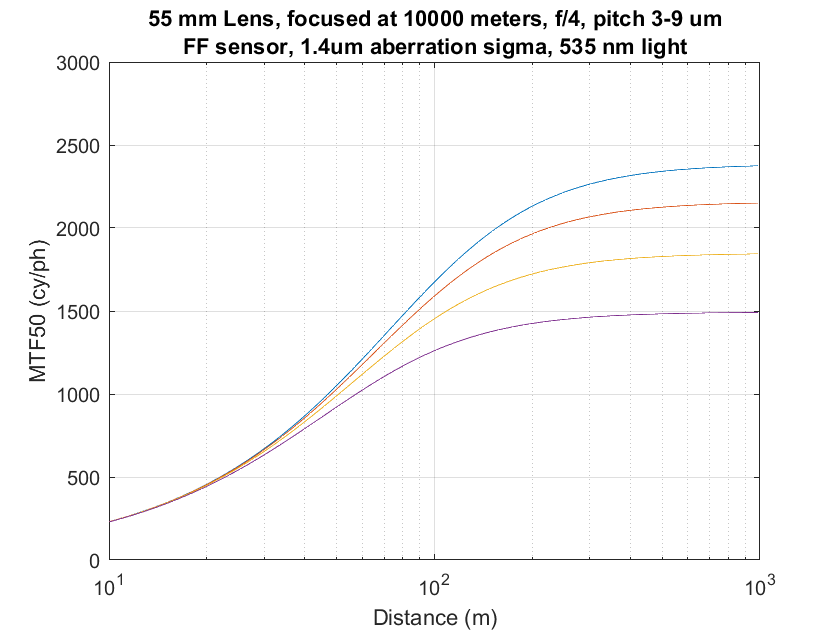
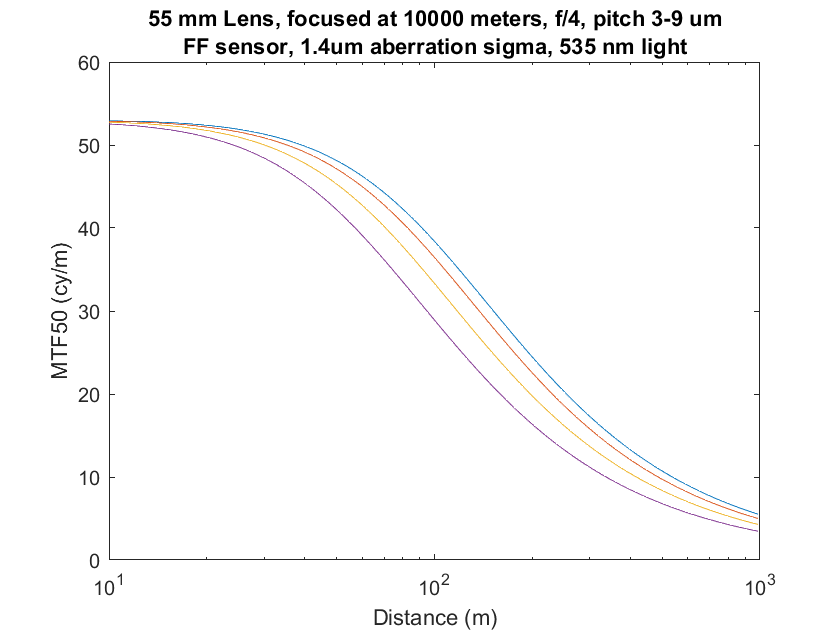
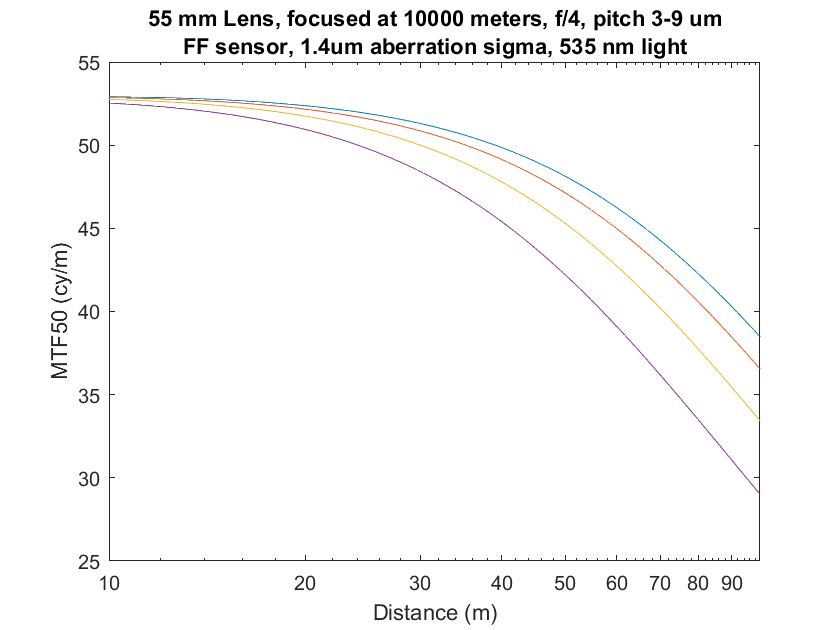
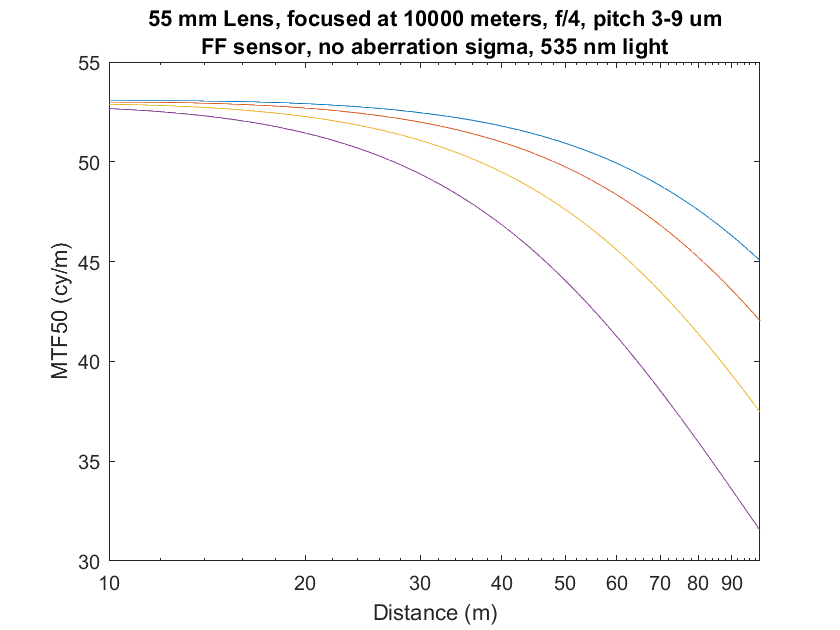
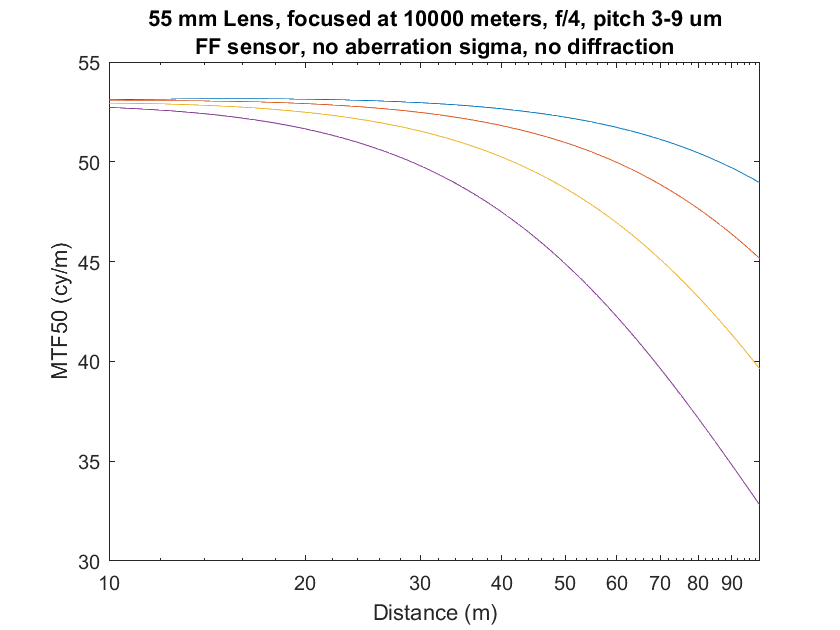
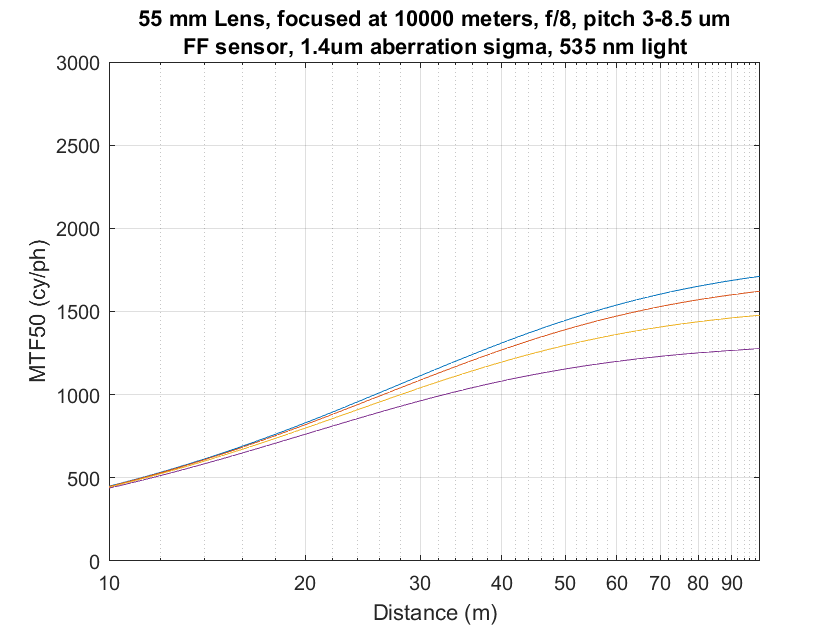
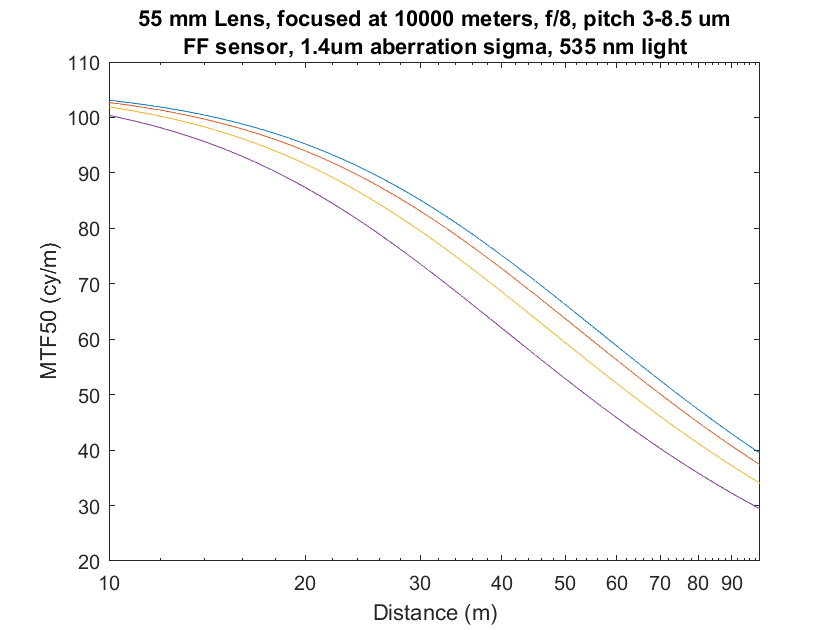
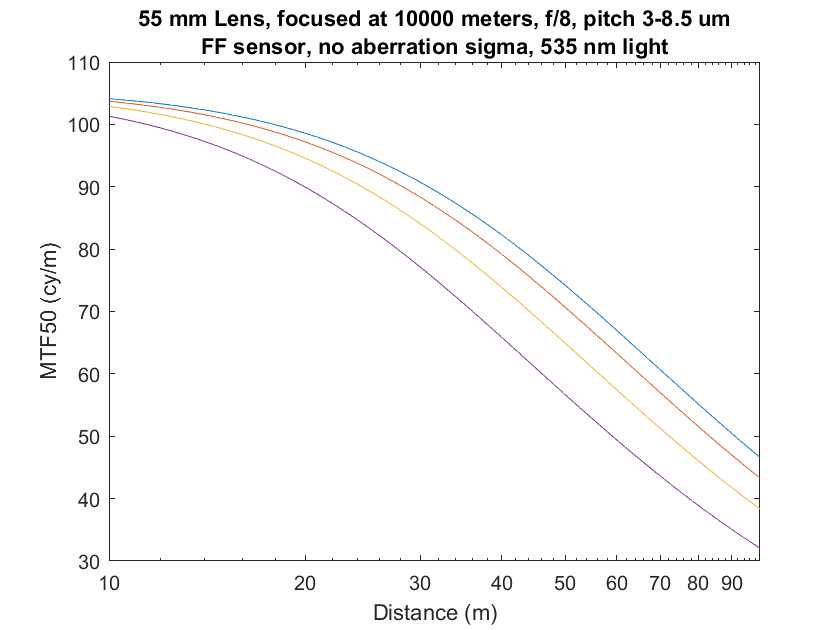
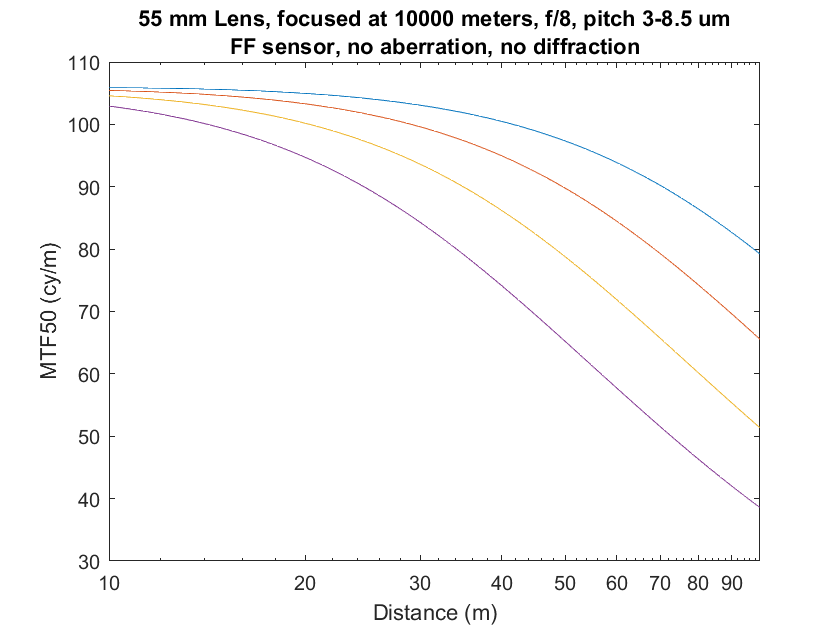
Leave a Reply